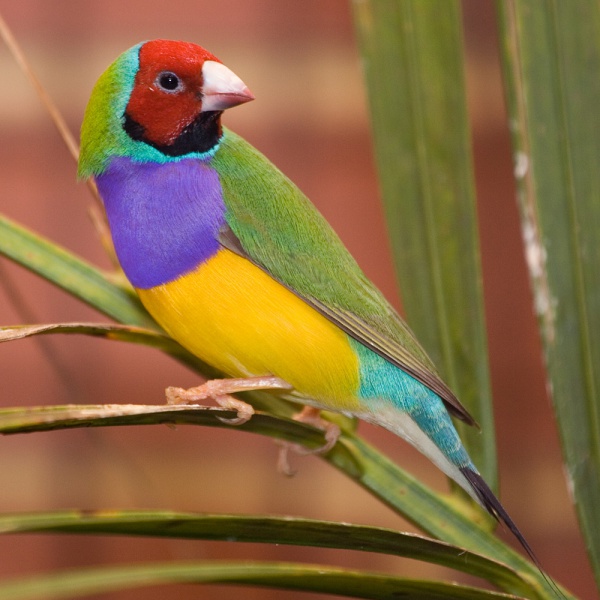Facts About Gouldian finch
The Gouldian finch, also known as the Lady Gouldian finch, Gould's finch, or the rainbow finch, is a strikingly colorful bird native to Australia. First described by John Gould in 1844 as Amadina gouldiae, this bird was initially classified in the genus Chloebia. However, genetic studies have since accurately reclassified it in the genus Erythrura; nonetheless, the IUCN still lists it as Chloebia gouldiae.
Both male and female Gouldian finches are renowned for their brilliant plumage, with males featuring a distinctive purple chest. These birds are relatively small, measuring between 125-140 mm in length. In the wild, they exhibit various color variants, and selective breeding has produced even more mutations. Interestingly, Gouldian finch chicks have specialized tubercles at the back of their gapes that reflect light, although they are not luminescent.
The distribution of Gouldian finches has been impacted by the Australian government's ban on exporting native fauna. However, captive breeding programs worldwide have produced a variety of color mutations. Unfortunately, their natural populations have declined due to habitat loss, diseases, and predators, with fires posing a significant threat.
Gouldian finches are social creatures, frequently joining mixed flocks outside the breeding season. During the breeding season, they nest in tree hollows. Their diet primarily consists of seeds, and they can consume up to 35% of their body weight in food daily. Female Gouldian finches possess the unique ability to influence the sex of their offspring based on the head color of their mates.
These finches are highly popular in aviculture due to their vibrant colors and relatively low maintenance needs. They coexist harmoniously with other species of grass finches and other non-aggressive birds. While trapping wild Gouldian finches for aviculture was once a common practice, it is now illegal in Australia.
